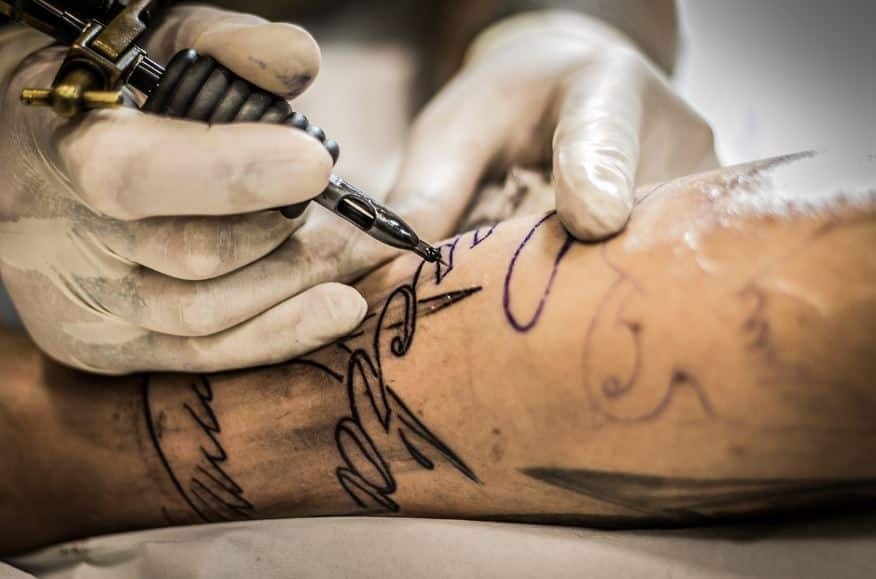FDA Releases Draft Guidance for Tattoo Ink Safety

WASHINGTON — The Food and Drug Administration on Monday released draft recommendations for tattoo ink manufacturers and distributors aimed at reducing the potential harm caused by microbial contamination.
The guidance includes examples of unsanitary manufacturing and distributing conditions and provides recommendations on how to ensure ink is not infected by microorganisms.
“Pathogens or other harmful substances in these inks can cause infections and serious injuries,” FDA Chief Scientist Namandjé Bumpus said in a press release.
“The FDA is issuing this draft guidance to help tattoo ink manufacturers and distributors recognize situations in which tattoo ink may become contaminated with microorganisms and take steps to protect public health,” Bumpus added.
Microorganisms in ink can cause problems since tattoos penetrate the outermost skin layer by 1.5 to 2 millimeters into the dermis, according to the FDA. Since tattoo needles often cause bleeding by piercing blood vessels, substances in the ink can get directly into the body through the puncture and travel throughout the body via the blood and lymphatic systems.
“Because of this, it is particularly important for tattoo inks to be manufactured using methods to ensure a product is safe,” Linda Katz, director of the FDA’s Office of Cosmetics and Colors, said in a written statement. “The recommended steps outlined by the FDA in the draft guidance provide manufacturers the information and resources needed to help ensure that tattoo inks are not contaminated.”
Tattoos have become more popular in America in recent years, up from 21% having at least one in a Harris Interactive poll in 2012 to 30% in 2023 according to the polling firm Ipsos. Ipsos also found 40% of Americans aged 18-34 have at least one tattoo.
According to the FDA, firms have conducted 18 recalls of tattoo inks contaminated by microorganisms in the past 20 years, and the agency has “received multiple reports of illnesses caused by microbially contaminated tattoo inks.”
A recent example of this is the multi-state nontuberculous mycobacterial skin infections outbreak from 2011 to 2012 reported by the Centers for Disease Control and Prevention. Across four states — most prominently New York with 14 confirmed cases — 22 confirmed cases of nontuberculous mycobacterial infections arose.
Tattoo-related nontuberculous mycobacterial skin infections took the form of mild inflammation such as a rash, papules or nodules to abscesses requiring surgical debridements.
The cases were all linked to a prediluted gray ink nationally distributed. The skin infections were a result of “using contaminated ingredients or poor manufacturing practices” or using inks “diluted with nonsterile water by tattoo artists,” according to the CDC.
Another recent example is the FDA’s May 2019 safety alert, informing consumers, tattoo artists and retailers of potential contaminated tattoo inks. In the report, the FDA “identified six tattoo inks contaminated with bacteria harmful to human health” that were “manufactured or distributed by four firms inspected under an ongoing assignment.”
The FDA worked with manufacturers and retailers to remove contaminated products from the market. Scalp Aesthetics, Dynamic Color Inc. and Color Art Inc. each voluntarily recalled some of their inks upon discovery of microorganism contamination.
In its draft guidance, the FDA evaluated general considerations that tattoos may be consumed by anyone, including those with underlying health conditions, and pathogens that normally wouldn’t be harmful to humans could be harmful when inserted below the epidermis, the outermost layer of skin.
Unsanitary conditions in the guidance include, lack of proper attire when manufacturing, not washing hands, unclean storage methods and unsuitable facilities to prepare and package ink.
Some FDA recommendations include testing ink and ink components for microbial contamination, ensuring ink sterilization methods are valid and establishing and applying general good manufacturing practices.
The draft guidance does not affect FDA approval of tattoos, as tattoos fall under the cosmetic category. The FDA also does not regulate practices in tattoo parlors as that typically falls under local or state health departments.
The guidance is open for comment through Sept. 11. Once passed, the guidance document holds no legal enforceability.
The Well News reached out to a number of local tattooing establishments in the area and will update this story should they wish to comment.
You can reach us at [email protected] and follow us on Facebook and Twitter
























